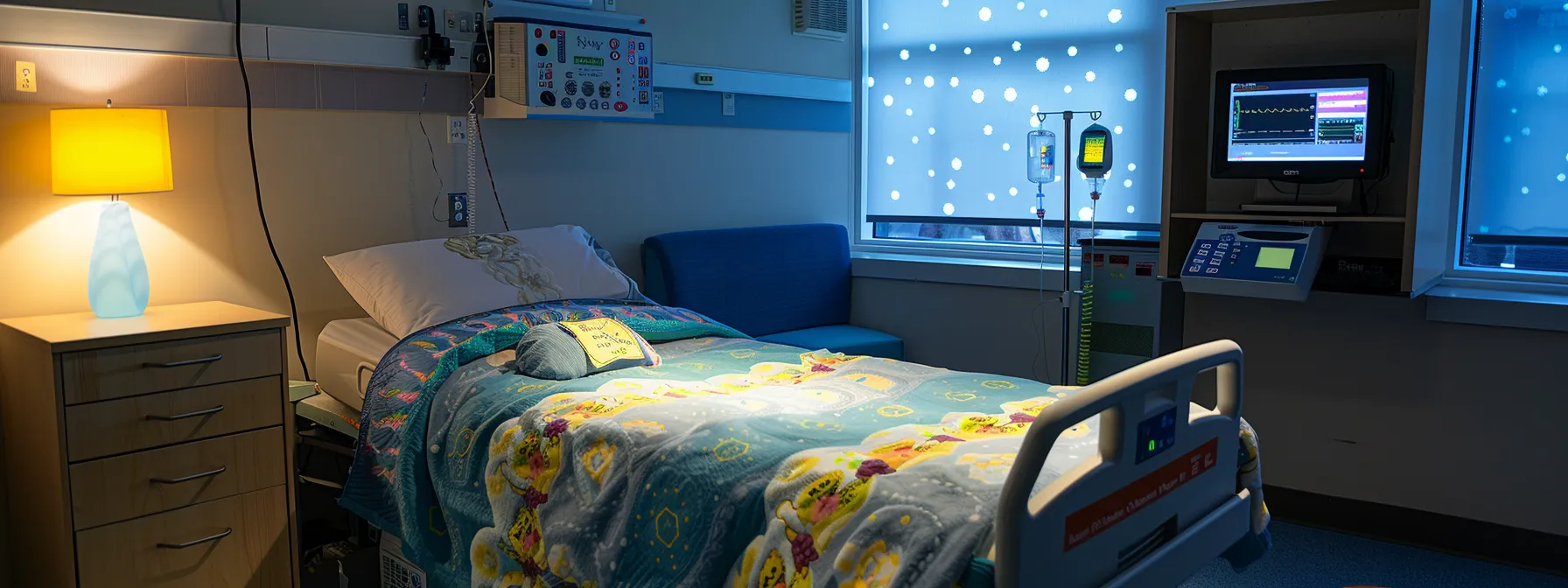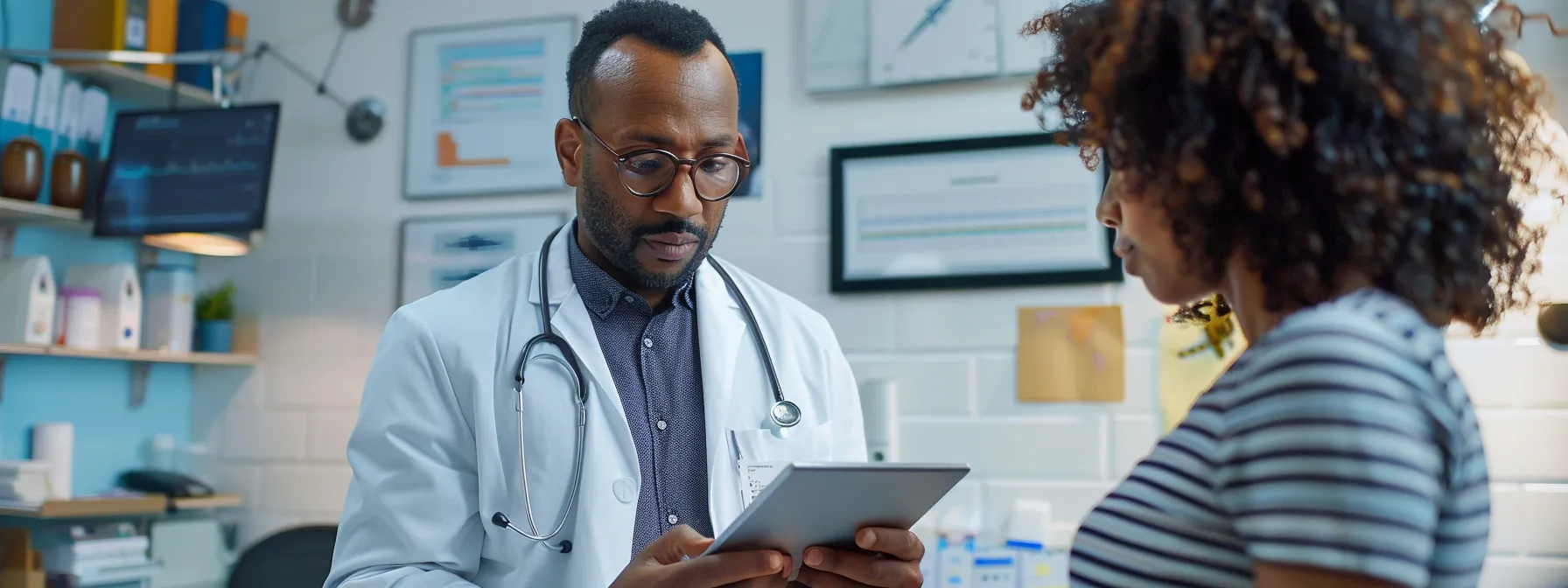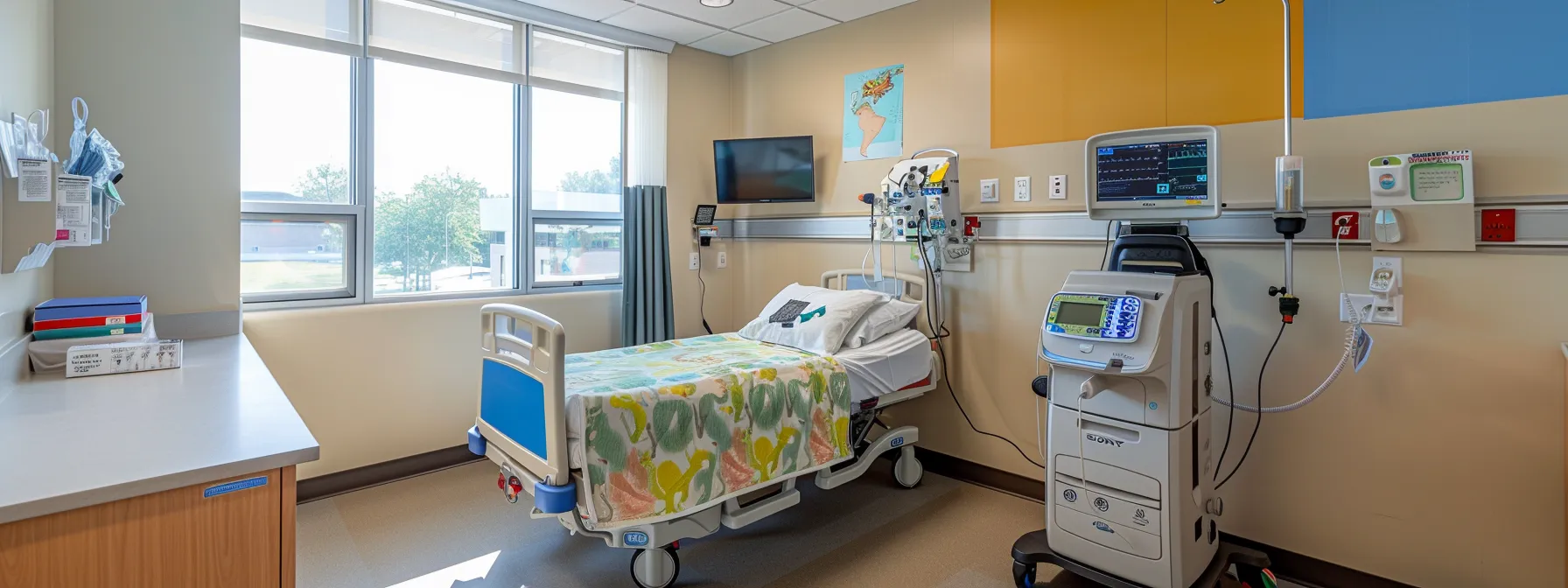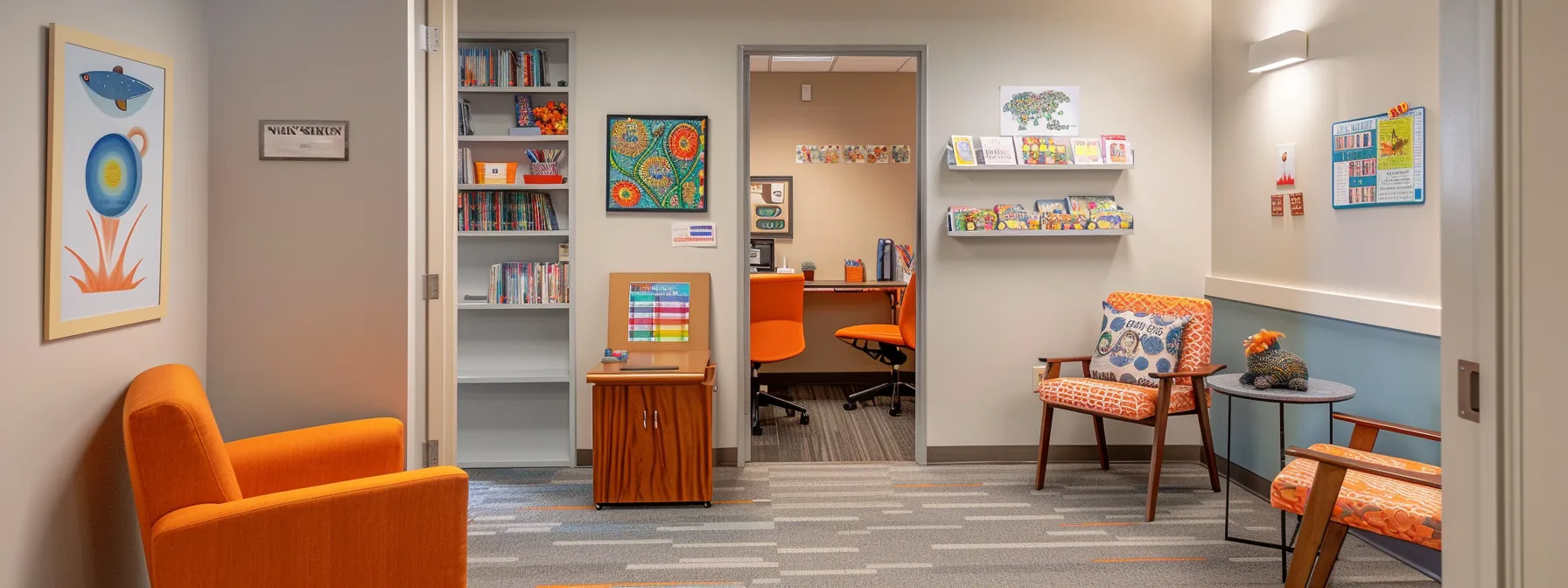Is your child often restless during the night, struggling to breathe while they sleep? Sleep apnea affects many kids, disrupting their rest and overall well-being. This blog post will explain the importance of sleep studies in diagnosing child apnea, how to interpret the results, and the best treatment options available. By understanding these aspects, parents can ensure their children receive the care they need for a healthier, more restful sleep. Addressing this issue can lead to better behavior and improved performance in school for your little ones.
Key Takeaways
- Sleep apnea in children can lead to serious health and behavioral issues if untreated
- Recognition of symptoms is essential to seek appropriate testing and interventions
- Early detection and personalized care significantly improve outcomes for children with sleep apnea
- Continuous follow-up with pediatric specialists is crucial for managing treatment effectiveness
- Support resources and educational materials empower parents navigating their child’s sleep apnea journey
Understanding Sleep Apnea in Children
Sleep apnea in children is defined as a condition where breathing repeatedly stops and starts during sleep. The two main types are obstructive sleep apnea, caused by blocked airways, and central sleep apnea, which involves issues in the brain’s signals. Common symptoms include loud snoring, gasping, and restless limbs. If left untreated, this disease can lead to serious consequences like learning difficulties and behavioral problems. Understanding these factors highlights the importance of sleep studies and discussing concerns with a burlington dentist to request appointment.
Term:
Defining Sleep Apnea and Its Types
Sleep apnea in children can significantly impact their overall well-being, leading to issues like fatigue and behavioral problems. There are two main types: obstructive sleep apnea, which often arises from structural issues like a small jaw or enlarged tonsils, and central sleep apnea, linked to how the brain signals breathing. Understanding these distinctions is essential, as they highlight the role of pulmonology specialists in diagnosing and treating this condition, ensuring that children receive the care they need to breathe comfortably through their nose and sleep soundly.
Symptoms of Sleep Apnea in Kids
When it comes to sleep apnea in kids, recognizing the symptoms is vital. Children may exhibit loud snoring, frequent gasping during sleep, or even night terrors, which can be alarming for parents. This can lead to significant issues, such as fatigue during the day and difficulty concentrating in school, as their bodies struggle to manage decreased oxygen levels and increased carbon dioxide levels at night.
For parents, understanding these symptoms is crucial as it can guide them toward seeking a sleep study, which might reveal whether their child requires surgery or other interventions like a ventilator. Research has shown that early detection and treatment can lead to significantly better outcomes for affected children.
Consequences of Untreated Sleep Apnea
Untreated sleep apnea in children can lead to serious repercussions, impacting both their physical and mental health. For instance, a lack of proper rest can hinder muscle development and contribute to learning difficulties, as children struggle to concentrate in school. Seeking a polysomnography test through health care providers, including a nurse practitioner, can assist in identifying breathing issues and determining potential treatments, such as positive airway pressure therapy, which can significantly improve a child’s quality of life.
The Role of Sleep Studies in Diagnosing Apnea

A sleep study is a valuable tool for diagnosing sleep apnea in children, as it measures various aspects of their sleep. Different types of sleep studies help identify breathing problems, monitor blood pressure, and assess carbon levels. Preparing your child for the study involves ensuring they wear comfortable pajamas, as well as discussing what to expect during the process, including possible sleepwalking episodes and bathroom breaks.
What Is a Sleep Study and How It Works
A sleep study, or polysomnography, is a comprehensive test designed to monitor a child’s sleep patterns, breathing, and oxygen saturation levels throughout the night. During this process, sensors are attached to monitor various aspects, such as breathing disturbances, leg movements indicating restless legs syndrome, and the position of the tongue, which can sometimes obstruct airflow. Understanding these measurements plays a crucial role in diagnosing conditions like sleep apnea or asthma, enabling healthcare professionals to develop tailored treatment plans that improve a child’s overall sleep quality.
Different Types of Sleep Studies for Children
When it comes to diagnosing sleep apnea in children, various types of sleep studies are available, each suited for different needs. For instance, a polysomnography test uses sensors to monitor breathing patterns, snoring episodes, and even blood oxygen levels throughout the night, giving a comprehensive view of a child’s sleep health. Additionally, if allergies contribute to breathing issues, sleep studies can help identify how environmental factors affect sleep quality, guiding effective treatments, including approaches in orthodontics to alleviate airway blockages.
Preparing Your Child for a Sleep Study
Preparing a child for a sleep study involves a few simple steps that can ease worries for both the child and the caregiver. It helps to ensure that the child wears comfortable pajamas and brings along a favorite blanket for comfort, which can create a calming atmosphere. Discussing what to expect, like the rhythm of the monitoring devices and how they will help track oxygen levels, can reduce anxiety and make the process smoother, paving the way for more effective therapy afterward.
What to Expect During the Sleep Study Process
During the sleep study process, parents can expect their child to be in a comfortable setting, typically equipped with a pillow and cozy bedding to help them relax. As the night progresses, sensors will monitor breathing patterns and any potential pressure changes in the throat while keeping track of oxygen levels. This straightforward approach allows healthcare professionals to gather critical data, which may lead to recommendations such as mechanical ventilation if significant issues are detected.
- Comfortable bedding, including a pillow, helps create a relaxed environment.
- Sensors monitor breathing patterns and oxygen levels throughout the night.
- Results assist in determining if interventions like mechanical ventilation are needed.
Interpreting Results From Sleep Studies

Understanding sleep study reports is crucial for parents navigating their child’s sleep apnea diagnosis. Common findings may include insights into breathing patterns and oxygen levels, while next steps can vary from consultations about mouth devices to potential referrals to specialists. This process ensures a clear plan for addressing concerns, ultimately guiding effective treatment options for the child’s health.
Understanding Sleep Study Reports
Understanding sleep study reports can be a crucial step for parents addressing their child’s apnea. These reports often highlight key issues such as hypoventilation, which indicates inadequate breathing, and its impact on sleep deprivation that affects overall health. When working with primary care providers and nursing teams, parents can better interpret these findings, ensuring they understand how these factors may relate to concerns like recurring ear infections or behavioral challenges in their child.
Common Findings in Pediatric Sleep Studies
Common findings in pediatric sleep studies often reveal how a child’s breathing patterns affect their overall behavior. For instance, interruptions in exhalation due to airway blockages can lead to daytime fatigue and irritability, which can impact their ability to concentrate in school. Parents learning about these results can work closely with healthcare providers to explore appropriate medications or even surgical options, such as plastic surgery in cases where structural issues are prominent.
Next Steps After Receiving Sleep Study Results
After receiving sleep study results, it’s crucial for parents to engage with their child’s healthcare team to discuss the findings. This evaluation may lead to the recommendation of using a machine such as a CPAP device to improve airflow during bedtime. Understanding latency issues or disruptions identified during the exam allows parents to explore suitable treatment options, whether that includes behavioral strategies or medical interventions, ensuring their child gets the restful sleep they need.
Treatment Options Following a Sleep Study

Following a sleep study, various treatment options can significantly improve a child’s sleep apnea. Continuous Positive Airway Pressure (CPAP) therapy is often recommended, alongside lifestyle changes and home care suggestions to enhance overall well-being. Additionally, medications and alternative treatment approaches may be explored based on the child’s physical examination and medical history, including factors like neck structure and muscle tone. Parents should consider these options and may request an appointment to discuss the best course of action for their child’s unique needs.
Continuous Positive Airway Pressure (CPAP) Therapy
Continuous Positive Airway Pressure (CPAP) therapy is often a key recommendation after sleep studies reveal issues like sleep apnea in children. This therapy uses a steady stream of air to keep the airways open, addressing the obstruction that can lead to breathing problems during sleep. By working closely with a polysomnographic technologist, parents can understand how CPAP could significantly reduce symptoms such as hypersomnia and improve their child’s overall sleep quality.
Lifestyle Changes and Home Care Suggestions
Making simple lifestyle changes can have a huge impact on a child with sleep apnea. Establishing a consistent bedtime routine, like dimming the lights and winding down with quiet activities, helps signal to their body that it’s time to sleep. Additionally, maintaining a healthy weight through balanced meals and regular exercise can also relieve some airway obstructions, promoting better airflow while they sleep.
Medications and Alternative Treatment Approaches
Medications and alternative treatment approaches play a significant role in managing sleep apnea in children. Some healthcare providers may recommend medications to address inflammation or allergies that contribute to airway blockages. For those seeking non-pharmaceutical options, methods such as yoga or breathing exercises can help improve overall respiratory function, making it easier for kids to breathe during sleep. Parents should work closely with their child’s healthcare team to find the most suitable strategies that fit their child’s specific needs and lifestyle.
Importance of Follow-Up Care
Regular follow-up care is crucial for managing sleep apnea in children. This involves ongoing monitoring to assess how effective the treatment is and making necessary adjustments. Pediatric sleep specialists play a vital role in this process, ensuring that long-term outcomes are optimized for the child. The focus will be on understanding the importance of these elements in maintaining a child’s overall health and improving their quality of life.
Regular Monitoring and Assessing Treatment Efficacy
Regular monitoring and assessing treatment efficacy are crucial for children experiencing sleep apnea. Continuous evaluation helps healthcare providers determine whether prescribed therapies, like CPAP or lifestyle changes, are effectively improving the child’s sleep quality. This ongoing process not only ensures that the treatment is working as intended but also allows for timely adjustments to enhance the child’s well-being and overall health.
Role of Pediatric Sleep Specialists
Pediatric sleep specialists play a critical role in managing sleep apnea in children by providing targeted care and ongoing support. These experts evaluate sleep study results and craft individualized treatment plans to address each child’s unique needs. By regularly monitoring progress, they ensure that interventions are effective and make necessary adjustments to help improve overall sleep quality.
- Pediatric sleep specialists offer targeted assessments and treatment plans for each child’s needs.
- They evaluate sleep study results to develop tailored approaches.
- Regular monitoring helps optimize treatment efficacy and adapt strategies as needed.
Managing Long-Term Outcomes for Children With Apnea
Managing long-term outcomes for children with apnea is crucial for ensuring their overall health and development. Regular follow-up visits enable healthcare providers to monitor the child’s progress, assess the effectiveness of treatments like CPAP therapy, and make necessary adjustments to optimize their care. Engaging in ongoing conversations with specialists can empower parents to understand how different strategies can enhance their child’s sleep quality and overall well-being.
Resources for Parents

Parents seeking support for their child’s sleep apnea will find various valuable resources. They can explore support groups and online communities for shared experiences and encouragement. Additionally, educational materials on sleep disorders help families gain insight into the condition. Finding specialists and healthcare providers further assists in navigating treatment options, ensuring the best care for their child’s health.
Support Groups and Online Communities
Support groups and online communities can be invaluable resources for parents navigating the challenges of child apnea. By connecting with others who share similar experiences, parents can gain practical advice and emotional support, helping them feel less isolated in their journey. These forums often provide insights on sleep studies, treatment options, and coping strategies, making it easier to manage their child’s condition and find the necessary resources for a healthier sleep environment:
- Sharing personal experiences can provide comfort and insights.
- Access to information on sleep studies and treatment options.
- Supportive discussions about coping strategies and management techniques.
Educational Materials on Sleep Disorders
Educational materials on sleep disorders serve as essential tools for parents seeking to understand their child’s sleep apnea. These resources often include articles, videos, and guides that break down complex concepts into easier-to-understand information. By learning about the symptoms, causes, and treatments of sleep apnea, parents can feel more empowered to discuss their child’s needs with healthcare providers and explore appropriate interventions, ensuring their child gets the rest they deserve.
Finding Specialists and Healthcare Providers
Finding the right specialists and healthcare providers for a child’s sleep apnea can be a vital step toward ensuring their well-being. Parents should look for professionals like pediatric sleep specialists or pulmonologists who understand the unique needs of children. Connecting with local health networks or seeking recommendations from trusted sources can help in locating qualified experts who can provide tailored evaluations and treatment plans.
Conclusion
Sleep studies are crucial for accurately diagnosing sleep apnea in children, as they provide essential insights into breathing patterns and oxygen levels during sleep. These assessments allow healthcare professionals to identify specific issues and develop tailored treatment plans to improve a child’s overall well-being. Early detection through sleep studies can significantly enhance a child’s quality of life, reducing fatigue and behavioral challenges. Parents must prioritize these evaluations to ensure their children receive the care and support they need for healthy, restful sleep.
At The Burlington Dentist, we know that you want to be someone who can breathe clearly and live without the constant burden of allergy symptoms. In order to do that, you need an optimized airway that functions properly despite allergic reactions. The problem is that chronic allergies silently reshape your airways, which makes you feel constantly congested, exhausted, and frustrated with persistent breathing difficulties.
We believe everyone deserves to breathe freely without letting allergies control their life. We understand how chronic allergies can impact every aspect of your daily activities and sleep quality, which is why Dr. Bethaney B. Brenner has developed a comprehensive approach that addresses both allergy symptoms and airway health.
Book Your Consultation Today!
Dr. Bethaney B. Brenner DMD
8 Milford St, Burlington, CT 06013
Related Articles
Sleep Apnea Symptoms in Children, Signs of Child Sleep Apnea, Identify Sleep Disorders in Children, The Importance of Sleep Studies, Kids Airway Quiz, Pediatric Sleep Apnea, Allergies and Airway, Crooked Teeth and Airway, Bedwetting and Airway, ADHD and Airway, The Vivos Treatment, Sleep Apnea 101





